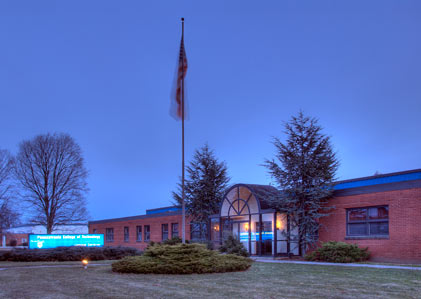States that Employ the Most HVAC Workers
The Bureau of Labor Statistics (BLS May 2024) found that the following states currently have the highest number of HVAC and HVAC/R workers employed:
|
State |
HVAC workers employed |
| 1. |
Florida |
38,290 |
| 2. |
California |
34,020 |
| 3. |
Texas |
32,070 |
| 4. |
New York |
22,710 |
| 5. |
Pennsylvania |
16,930 |
| 6. |
North Carolina |
13,750 |
| 7. |
Michigan |
13,720 |
| 8. |
Virginia |
13,640 |
| 9. |
Ohio |
13,570 |
| 10. |
Georgia |
12,210 |
So, where is the demand expected to be the highest? According to Projections Central (2025), the following 20 states will have the highest expected percentage increase in positions for HVAC mechanics and installers between 2022 and 2032:
|
States |
Percentage increase in positions for HVAC mechanics and installers between 2022 and 2032 |
| 1. |
Utah |
34.3 percent |
| 2. |
Idaho |
26.9 percent |
| 3. |
Montana |
26.1 percent |
| 4. |
Wyoming |
23.9 percent |
| 5. |
Mississippi |
20.2 percent |
| 6. |
Oregon |
19.3 percent |
| 7. |
Arizona |
18.3 percent |
| 8. |
Georgia |
17.6 percent |
| 9. |
Texas |
17.4 percent |
| 10. |
Florida |
16.9 percent |
| 11. |
South Dakota |
16.2 percent |
| 12. |
New Mexico |
16.1 percent |
| 13. |
Colorado |
15.6 percent |
| 14. |
Nevada |
14.8 percent |
| 15. |
Rhode Island |
13.6 percent |
| 16. |
Iowa |
13.3 percent |
| 17. |
Nebraska |
13.2 percent |
| 18. |
North Carolina |
12.9 percent |
| 19. |
Wisconsin |
12.9 percent |
| 20. |
North Dakota |
12.6 percent |
The order of the top-employing states changes when expressed as the absolute number of jobs added rather than as a percentage. The states with the highest expected number of new openings for HVAC mechanics and installers include:
|
States |
New HVAC positions anticipated (2022-2032) |
| 1. |
Florida |
3,940 |
| 2. |
California |
3,790 |
| 3. |
Texas |
3,520 |
| 4. |
Pennsylvania |
1,720 |
| 5. |
North Carolina |
1,580 |
| 6. |
Georgia |
1,380 |
| 7. |
Ohio |
1,340 |
| 8. |
Virginia |
1,260 |
| 9. |
Illinois |
1,100 |
| 10. |
Tennessee |
1,000 |
| 11. |
Arizona |
990 |
| 12. |
Washington |
990 |
| 13. |
New Jersey |
950 |
| 14. |
Utah |
930 |
| 15. |
Michigan |
920 |
| 16. |
Missouri |
860 |
| 17. |
Colorado |
800 |
| 18. |
Indiana |
750 |
| 19. |
Maryland |
720 |
| 20. |
Wisconsin |
660 |
These are the latest complete state figures available as of April 2025.
Reasons vary as to why these particular states are experiencing the most growth in HVAC.
For example, most of Arizona is hot and dry, so residents need cooling systems. Agriculture is also a significant part of Arizona’s economy, so cold storage facilities and refrigerated transportation are essential. Manufacturing in the state has increased, particularly for electronics and communication components. Manufacturing facilities often require specialized climate-control systems. More people, especially Americans over the age of 65, consistently move into Arizona than move out, which has led to increased construction of residences and facilities.
Similar to Arizona, agriculture and its refrigeration requirements in Florida contribute to the need for HVAC technicians. Florida also draws residents from colder northern states, which means the construction of new residences and facilities to accommodate them. However, tourism is the mainstay of Florida’s economy. The hospitality venues drive the need for climate-control systems.
The state of Washington is another example. Western Washington tends to be gray, chilly, and often rainy. Eastern Washington is hot in the summer, cold in the winter, and dry most of the year. The economy is diverse, with a substantial interest in tech and engineering plus agriculture. At a commercial level, companies like Microsoft, Boeing, or Amazon require specialized systems to keep equipment at the proper temperature.
Another factor is relative economic strength. States with industries doing well generally have higher rates of construction and a higher demand for HVAC professionals. For example, Statista placed California as having the strongest economy of all the states. Texas was second, followed by Florida, New York, and Illinois.
In their latest rankings of the best states, the U.S. News & World Report (2025) named Florida as having the strongest economy, based on employment, business environment, and population growth. Idaho, Utah, Colorado, and Nevada completed their list of the top five. Technicians interested in considering other states will find an alphabetical listing of the economic strengths and weaknesses in Kiplinger’s economic outlook for all 50 states.
Overall, each state has a unique combination of economic prosperity, job opportunities, and weather patterns that may make them ideal locations for HVAC/R professionals.



